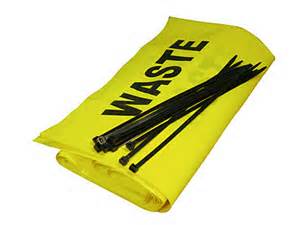 |
So, if you’ve decided that the best option for managing your solvent-contaminated wipes is to see if you can get them exempt from EPA’s definition of solid and/or hazardous waste by complying with either the rule’s solid waste exclusion or therule’s hazardous waste exclusion, you need to know the steps to take to satisfy the rule’s conditions.
5 Steps to Managing Solvent-Contaminated Wipes
Step 1. Contract with an Eligible Laundry or Landfill
For your solvent-contaminated wipes to be excluded from the solid waste definition, they must be sent for cleaning and reuse to a laundry or dry cleaner whose discharge, if any, is regulated under the Clean Water Act.
In order for solvent-contaminated wipes sent for disposal to be excluded from the definition of hazardous waste, they must be sent to a landfill that is either a municipal solid waste landfill or a hazardous waste landfill. Other options are sending the wipes to a municipal waste combustor or other combustion facility or to a hazardous waste combustor, boiler, or industrial furnace. Wherever you send them, make sure that the facility is following the regulations applicable to it.
The rest of the steps apply to both the solid waste and hazardous waste exclusions.
Step 2. Set Up Containers
Follow these instructions for containers used to accumulate, store, and transport solvent-contaminated wipes.
- The wipes must be contained in nonleaking, closed containers.
- The containers must be labeled “Excluded Solvent-Contaminated Wipes.”
- The containers must be able to contain free liquids, should free liquids occur.
- The container must be sealed with all lids properly and securely affixed to the container and all openings tightly bound or closed sufficiently to prevent leaks and emissions when any of the following occur:
- The container is full;
- When the solvent-contaminated wipes are no longer being accumulated; or
- When the container is being transported.
Join us for the Solvent-Contaminated Wipes webinar on June 23 to recognize what’s considered a “wipe” under the EPA’s regulations. Learn more.
Step 3. Observe Time Limits for Accumulating Solvent-Contaminated Wipes
As a generator of solvent-contaminated wipes, you may accumulate the wipes for up to 180 days from the start date of accumulation for each container before being sent for cleaning or disposal.
Step 4. Say No to Free Liquids
The solvent-contaminated wipes must contain no free liquids at the point of being sent for cleaning or disposal.
Note: Any free liquids removed from the solvent-contaminated wipes or from the container holding the wipes must be managed according to the applicable hazardous waste regulations.
Step 5. Keep Good Records
As the generator of the solvent-contaminated wipes, you must maintain at your site documentation that contains:
- Name and address of the laundry, dry cleaner, landfill, or combustor that is receiving the solvent-contaminated wipes;
- Documentation that the 180-day accumulation time limit is being met; and
- Description of the process you are using to ensure the solvent-contaminated wipes contain no free liquids at the point of being transported for disposal.
Note: Solvent-contaminated wipes that contain listed hazardous waste other than F001- to F005-listed solvents, or exhibit the characteristic of toxicity, corrosivity, or reactivity because of nonlisted solvents or contaminants other than solvents, are not eligible for either of the rule’s conditional exclusions. In addition, wipes that are hazardous waste due to the presence of trichloroethylene are not eligible for the hazardous waste exclusion—they must be managed as a hazardous waste.
Solvent-Contaminated Wipes: Best Practices for Determining Exemption Eligibility and Meeting Regulatory Requirements
Learn how facilities must manage the wipes as specified in the regulation and comply with applicable recordkeeping requirements. Register now!
Why Are Wipe Rules Different in My State?
Most states have developed and run their own hazardous waste programs as an alternative to direct EPA management.
State adoption of the federal Solvent-Contaminated Wipes final rule is optional because the rule is less strict than the previous requirements under the Resource Conservation and Recovery Act (RCRA).
States can create different standards, but they must be equivalent to the federal regulations (i.e., they must provide equivalent protection, cannot regulate fewer handlers).
States may adopt the entire rule or certain provisions.
The Solvent-Contaminated Wipes final rule went into effect on January 31, 2014, in states and territories that are not RCRA-authorized, including Iowa and Alaska.
Check with your state environmental agency to see if your state has adopted the Solvent-Contaminated Wipes final rule.
